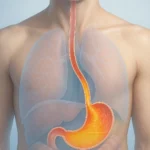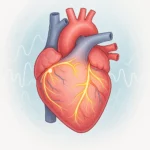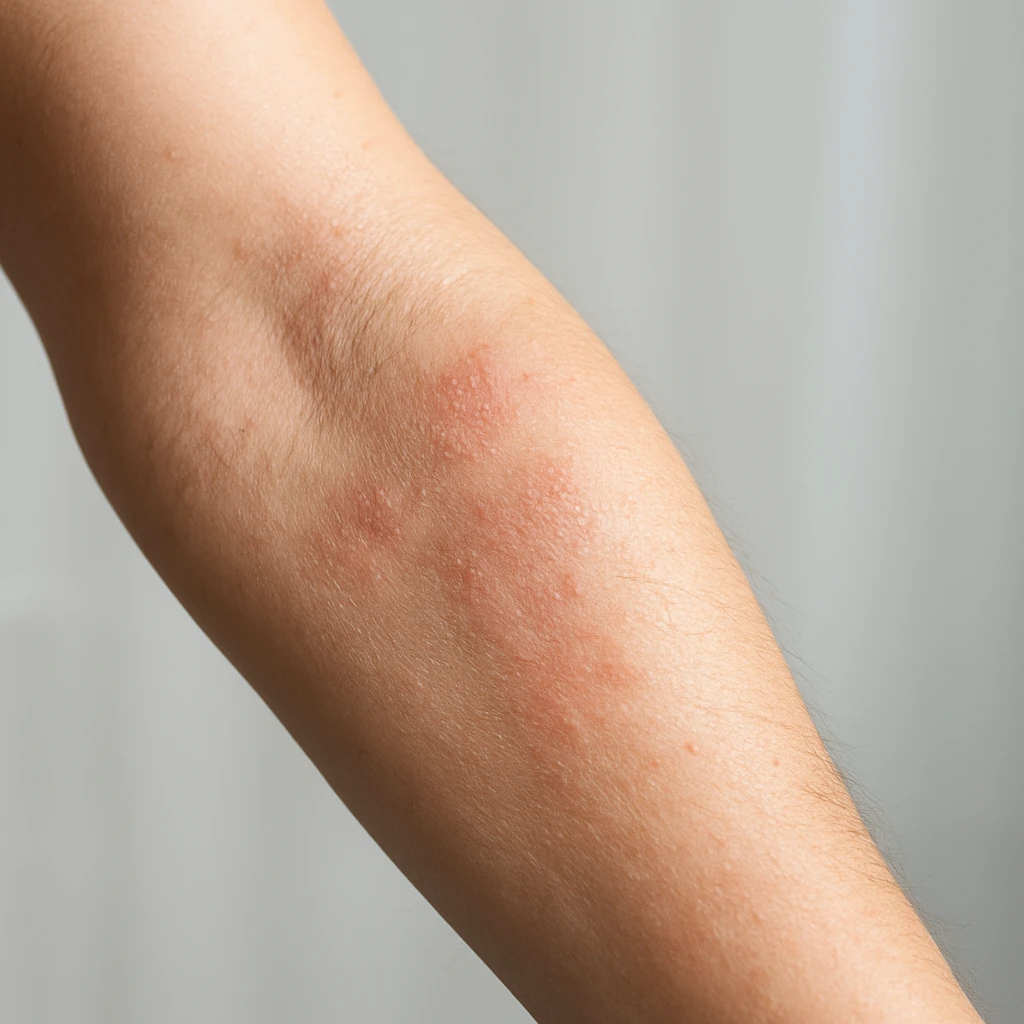
What Causes Dry Skin on Hands and How to Treat It
Clinical Overview of Dry Skin on the Hands
Clinical Importance and Definition
Dry skin on the hands, medically referred to as hand eczema or hand dermatitis, is one of the most common dermatologic conditions encountered in clinical practice. It represents a spectrum of skin barrier disruption and inflammation ranging from mild roughness and scaling to painful fissuring and redness. For medical students, understanding this condition is essential, as it demonstrates how environmental exposures and impaired epidermal repair mechanisms interact to produce chronic skin disease.
The clinical significance of hand eczema extends beyond localized symptoms. Because the hands are vital for daily and occupational tasks, persistent dryness and irritation can affect both function and quality of life. In professional environments, this often translates into discomfort, absenteeism, or reduced performance, especially where manual work or strict hygiene practices are required. Recognizing dry skin on the hands as both a medical and occupational issue helps future clinicians apply dermatologic principles to preventive and practical care.
Epidemiology and Occupational Relevance
Hand eczema is among the most prevalent forms of dermatitis and remains a leading cause of occupational skin disease. Lifetime prevalence in the general population lies within the low single- to low double-digit percentage range, highlighting its broad public health impact. Nearly every clinician will encounter affected individuals in community and workplace settings.
Occupational exposure plays a major role in disease onset and persistence. Common high-risk groups include:
- Healthcare workers performing frequent hand hygiene
- Hairdressers and cosmetologists exposed to chemicals and water
- Food handlers and kitchen staff who wash hands repeatedly
- Cleaners and janitorial staff using detergents or disinfectants
Repeated contact with water, detergents, or disinfectants disrupts the skin’s lipid barrier, increasing susceptibility to irritation and inflammation. Among healthcare professionals, frequent hand hygiene-though essential for infection prevention-can unintentionally heighten this risk. Understanding occupational links reinforces the importance of preventive education and evidence-based clinical management.
Pathophysiology: How Skin Barrier Breakdown Causes Dryness and Inflammation
Epidermal Barrier Dysfunction
The outermost skin layer, the stratum corneum, functions as a barrier that maintains hydration and shields the body from environmental irritants. When this layer is disrupted, transepidermal water loss increases, leading to dryness, tightness, and microfissures. These small breaks allow irritants and allergens to penetrate more easily, triggering local inflammation. This mechanism underlies many cases of dry skin on the hands and hand eczema, rendering the skin more vulnerable to chemical and physical stress.
Loss of epidermal lipids, repeated detergent exposure, and mechanical friction compromise the barrier’s integrity. Over time, this causes a recurrent cycle of dryness and irritation that may progress to chronic dermatitis if uncorrected. Understanding this barrier impairment is key to prevention and therapy.
Inflammatory and Genetic Mechanisms
When the skin barrier fails, the immune system responds to irritants and allergens that penetrate the surface. Inflammatory cells release cytokines and mediators, producing redness, swelling, and itching-hallmarks of eczematous inflammation. Three overlapping mechanisms commonly contribute to dry, inflamed hand skin:
- Irritant contact dermatitis
- Allergic contact dermatitis
- Atopic dermatitis
Genetic factors also influence susceptibility. Individuals with an atopic background or prior eczema have more permeable skin and heightened reactivity. This explains why identical exposures may cause significant irritation in one person but minimal symptoms in another. Recognizing this interplay between barrier dysfunction and immune activation aids clinicians in identifying patients at higher risk of chronic or recurrent hand eczema.
External Triggers and Modifying Factors
Environmental and occupational exposures remain major contributors to hand dryness and eczema. Frequent handwashing and prolonged wet work repeatedly strip away protective lipids. Regular exposure to soaps, detergents, disinfectants, or solvents worsens this effect, leaving the skin sensitive and inflamed. These triggers are particularly relevant in healthcare, food service, and cleaning professions, where repeated wetting and drying of the hands are routine.
Common triggers include:
- Frequent or prolonged handwashing
- Use of soaps, detergents, or disinfectants
- Contact with solvents and cleaning agents
- Repeated glove use or wet work
Personal factors such as atopic history and previous hand eczema episodes increase the likelihood of flare-ups even with mild exposures. Awareness of these risks is essential to design preventive routines and reduce recurrence. Together, biological and environmental mechanisms explain why dry skin on the hands often persists despite moisturization, requiring multifaceted management to restore the barrier.
Recognizing and Diagnosing Hand Eczema and Dry Skin
Typical Clinical Features
Dry skin and hand eczema can appear in several overlapping patterns. Common findings include dryness, fine or coarse scaling, erythema, fissures, and sometimes vesiculation or lichenification. The severity varies with disease stage and chronicity. Acute flares often present with erythematous, edematous patches, vesicles, or crusts, while chronic forms show thickened, hyperkeratotic skin and fissures.
- Dryness and scaling (fine or coarse)
- Erythema and fissures
- Vesiculation or lichenification in chronic stages
- Discomfort including itching, burning, or pain
Lesions may appear on the palms, dorsal surfaces, or fingertips, sometimes asymmetrically. Early recognition of these signs helps differentiate transient dryness from true hand eczema requiring targeted care.
Diagnostic Approach
Diagnosis of hand eczema is primarily clinical. A comprehensive history should document occupational and household exposures, hand hygiene practices, glove use, and atopic background. Morphology and distribution of lesions provide diagnostic clues, while prior eczema, seasonal variation, and response to irritant exposure offer further context.
Patch testing is recommended when allergic contact dermatitis is suspected or when the condition is chronic, severe, or refractory to standard management. Identifying allergens such as metals, fragrances, or preservatives helps tailor treatment and avoidance strategies, resulting in improved outcomes.
Differential Diagnosis
Several other dermatoses can mimic hand eczema. Accurate differentiation is critical for management. Common differential diagnoses include:
| Condition | Key Distinguishing Features |
|---|---|
| Psoriasis | Well-demarcated plaques with silvery scale |
| Tinea manuum | Often unilateral with fine scaling and fungal origin |
| Keratoderma | Thickened, waxy skin without inflammation |
| Other dermatoses | Consider when lesions deviate from classic eczematous appearance |
When to See a Doctor
- Painful fissures or bleeding areas
- Persistent itching or discomfort interfering with daily tasks
- Signs of infection such as oozing, crusting, or swelling
- Recurrent or chronic eczema not responding to treatment
Medical evaluation is essential under these conditions to confirm the diagnosis and establish an appropriate management plan.
Treatment and Care for Dry Skin on the Hands
First-Line Barrier Repair and Topical Care
The cornerstone of managing dry skin and hand eczema is restoring the skin barrier. Regular use of bland, fragrance-free emollients replenishes lipids, reduces transepidermal water loss, and maintains hydration. These should be applied multiple times daily, particularly after handwashing and before bed. Ointments and thick creams are preferred over lotions for better occlusion and moisture retention.
- Apply emollients frequently, especially after washing hands.
- Choose ointments or thick creams for improved hydration.
- Use fragrance-free products to reduce irritation risk.
When inflammation occurs, topical corticosteroids remain first-line therapy. Potency should match disease severity and anatomical site-for instance, mid- to high-potency agents for the palms and lower potency for dorsal surfaces. Short treatment courses control flares, followed by maintenance with emollients. Correct application technique and duration minimize side effects and maximize efficacy.
| Site | Recommended Potency | Notes |
|---|---|---|
| Palmar skin | Mid- to high-potency | Thicker stratum corneum may require stronger formulations |
| Dorsal hand | Low- to mid-potency | Use milder preparations to avoid atrophy |
Systemic and Targeted Treatments
For moderate-to-severe or chronic hand eczema unresponsive to optimized topical therapy, systemic options may be necessary. Traditional immunomodulatory medications are used under medical supervision when symptoms persist or impair function.
Newer biologics and small-molecule inhibitors target specific immune pathways implicated in eczema, offering a personalized approach. Therapy selection depends on disease subtype, severity, comorbid atopic conditions, and safety profile, emphasizing individualized care.
Patient Education and Behavioral Adjustments
- Maintain regular use of moisturizers and barrier creams.
- Avoid fragrances, harsh soaps, and prolonged water exposure.
- Wear protective gloves during wet work and dry hands thoroughly afterward.
- Adhere to prescribed topical regimens to minimize relapses.
- Follow gentle cleansing and moisturizing routines for long-term barrier health.
Behavioral adjustments complement medical management by supporting long-term remission. Emphasizing preventive routines-such as moisturizing after washing and protecting the skin during work-helps sustain barrier integrity and reduce flare frequency. An evidence-based, layered approach combining barrier repair, inflammation control, and individualized escalation achieves the best outcomes for chronic hand eczema.
Prevention, Prognosis, and Ongoing Challenges for Dry Skin on Hands
Occupational and Lifestyle Prevention
Preventing dry skin on hands and hand eczema focuses on minimizing contact with irritants while maintaining the skin barrier. The use of protective gloves, selected according to task and material sensitivity, helps limit exposure to water, detergents, and chemicals. Incorporating glove-free breaks reduces occlusion and sweating, both of which can aggravate irritation. Choosing non-latex or breathable materials can further enhance comfort for individuals with sensitive skin.
- Choose gloves appropriate to the specific task and sensitivity of the user.
- Include regular glove-free breaks to prevent sweating and occlusion.
- Use breathable or non-latex materials to improve comfort and reduce reactions.
Consistent use of emollients or barrier creams during and after work shifts is central to occupational skin protection. These products help restore lipid balance and reinforce the stratum corneum, especially when applied after handwashing or glove removal. Workplaces that promote structured hand-care routines and provide suitable moisturizers tend to observe fewer cases of occupational dermatitis. Preventive behavior supported by education and workplace policy remains among the most effective strategies to reduce recurrence of hand eczema.
Prognosis and Long-Term Outlook
Hand eczema often follows a chronic or relapsing course, particularly when occupational or environmental exposures continue. Prognosis depends on factors such as timely identification of triggers, exposure reduction, and adherence to protective care routines. Individuals who consistently practice barrier repair and avoid irritants generally achieve improved symptom control and reduced relapse frequency.
Improvement typically occurs with diligent management, though full remission may require extended periods. Recurrence is common in cases where exposure modification is difficult, emphasizing the importance of tailored preventive strategies and ongoing follow-up. Long-term outcomes are best achieved through continuous education, realistic expectations, and collaboration among patients, clinicians, and employers in high-risk professions.
Research Gaps and Future Directions
Although preventive methods and standard therapies are well established, several areas of evidence remain incomplete. Comparative studies of emollient formulations and barrier creams are limited, making it difficult to determine which products are most effective for specific clinical subtypes. Similarly, data on the long-term safety and efficacy of newer systemic and targeted therapies for chronic hand eczema continue to evolve.
- Comparative data on emollient and barrier cream effectiveness remain limited.
- Long-term safety and efficacy findings for novel systemic or targeted treatments are still emerging.
- Further research is needed to evaluate adherence and preventive outcomes in occupational environments.
Future research should aim to define optimal preventive regimens, improve adherence strategies, and measure real-world outcomes in workplace settings. Ongoing investigation into biological and environmental factors will refine both prevention and management, promoting more personalized and sustainable care for individuals with chronic hand eczema.
Frequently Asked Questions About Dry Skin on Hands
- Why do some people develop dry skin on their hands more easily?
- Frequent handwashing, chemical exposure, and underlying atopic conditions can weaken the skin’s barrier, making some individuals more prone to dryness and irritation.
- Is there a difference between dry skin and hand eczema?
- Yes. Dry skin refers to dehydration and roughness, while hand eczema involves inflammation, redness, and sometimes fissures or blisters, often triggered by irritants or allergens.
- Which occupations are most affected by chronic hand dryness?
- Jobs involving repeated wet work-such as healthcare, cleaning, food handling, and hairdressing-have higher rates of hand eczema due to ongoing exposure to water and detergents.
- Can frequent use of hand sanitizer cause hand eczema?
- Yes. Alcohol-based sanitizers can strip natural oils and irritate sensitive skin when used repeatedly, especially without regular moisturizing afterward.
- What are early signs that hand dryness may be turning into eczema?
- Persistent redness, itching, cracking, or painful fissures beyond simple roughness often indicate evolving eczema that may need medical evaluation.
- How can protective gloves help prevent flare-ups?
- Appropriately chosen gloves reduce exposure to irritants, but short glove-free breaks and breathable materials are important to prevent sweating and further irritation.
- Do moisturizers really make a difference?
- Regular use of fragrance-free emollients strengthens the skin barrier and reduces flare frequency by retaining moisture and preventing water loss.
- When should someone see a doctor about dry, cracked hands?
- If the dryness is painful, persistent, or shows signs of infection such as swelling or oozing, professional assessment is advised to rule out chronic hand eczema.
- Is hand eczema contagious?
- No. Hand eczema is an inflammatory condition, not an infection, and cannot spread between people through touch.
- Can dry skin on hands ever fully heal?
- With consistent care, many people see significant improvement. However, in chronic cases or ongoing exposure, symptoms may return without continued barrier protection and preventive habits.




















